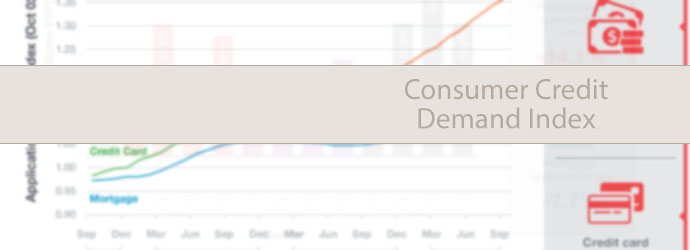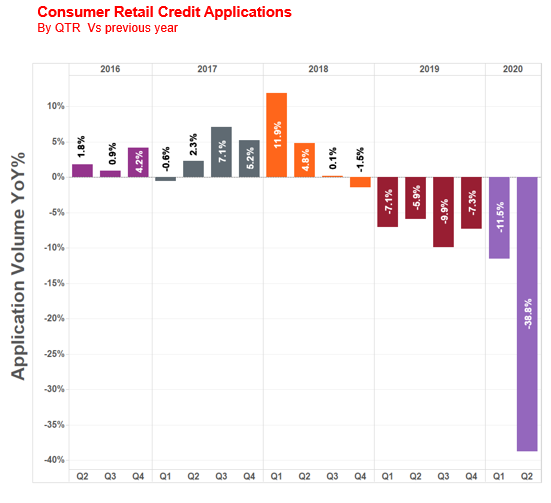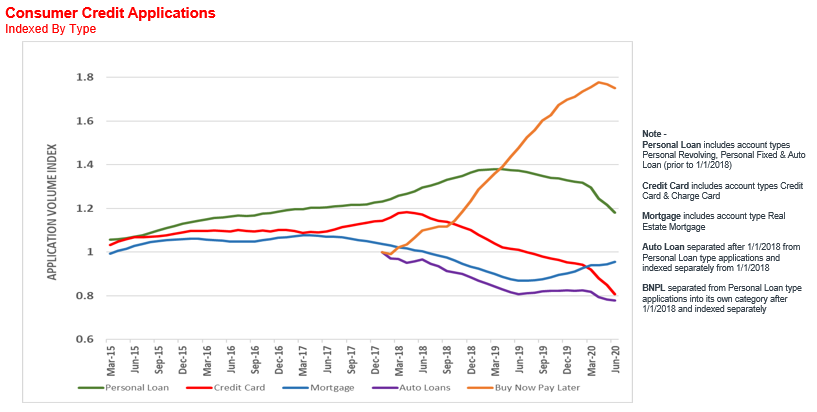Mortgage applications increase in all states amid COVID-19, while other consumer credit demand falls
Equifax Quarterly Consumer Credit Demand Index: June 2020
- Overall consumer credit applications down -38.8% (vs June quarter 2019)
- Credit card applications dropped significantly by -45.4% (vs June quarter 2019)
- Personal loan applications dropped -33.5% (vs June quarter 2019)
- Buy now pay later applications reduced -7.3% (vs June quarter 2019)
- Auto loan applications down -13.7% (vs June quarter 2019)
- Mortgage applications increased by +7.6% (vs June quarter 2019).

SYDNEY – 6 August, 2020 – Demand for credit cards, personal loans, buy now pay later, and auto loans dropped in the June 2020 quarter according to data from the latest Quarterly Consumer Credit Demand Index (June 2020). Mortgage applications bucked the trend largely driven by Generation Z as many in this generation reach home buying age.
Released today by Equifax, the global data, analytics and technology company and the leading provider of credit information and analysis in Australia and New Zealand, the index measures the volume of credit applications for credit cards, personal loans, buy now pay later (BNPL) and auto loans.
The largest declines came from credit cards which continue to fall out of favour. In the June 2020 quarter, the number of applications dropped by -45.4% compared to the same time last year, with all states and territories experiencing similar falls. The decline in credit cards since early 2018 is mainly due to consumers switching to alternative products like debit cards, small Fintech loans and BNPL, but the upward trend of BNPL did not continue in this quarter.
Kevin James, General Manager Advisory and Solutions, Equifax said: “The 7.3% reduction in buy now pay later applications in the June 2020 quarter wasn’t expected, but the government’s economic stimulus measures in response to COVID-19 may have lessened the need for consumers to buy on credit. There is also strong sentiment from many consumers to pay down their debts and use any stimulus to get them in better financial shape where they can”.
The sharp drop in personal loan applications for the June quarter YOY (-33.5%) can be attributed to COVID-19, government stimulus and switching to alternative types of credit like BNPL. Auto loans also fell by -13.7% YOY for the June quarter, however held up better than other forms of credit during the COVID-19 period bouncing back in the lead up to end of financial year.
Credit card applications continued their decline in the June quarter (-45.37%). All states and territories declined at a similar rate: NSW (-46.9%), WA (-46.6%), NT (-44.6%), VIC (-45.5%), QLD (-43.9%), ACT (-43.8%), TAS (-41.5%), SA (-40.7%). Decreases have risen over the last quarter.
Personal loan applications have decreased across all states and territories in the June quarter (-33.53%). The largest decline was seen in TAS (-35.2%), followed by VIC (-34.7%), NT (-34.6%), NSW (-34.5%), QLD (-34.4%), WA (-29.7%), SA (-28.8%) and the ACT (-27.1%).
Mortgage demand improved in the June quarter (+7.55%). A significant uptick can be seen when compared to this time last year as well as comparing to the March 2020 quarter.
All states and territories experienced an increase in mortgage applications, with the ACT (+18.5%), NT (+12.2%), NSW (+7.7%) and VIC (+4.7%) the clear leaders. Most of this demand was driven by young Australians, with Gen Z accounting for +19.8% of applications. Homeownership desire among millennials (Gen Y) also increased (+0.2%), compared to a decline among Gen X (-6.5%) and baby boomers (-10.8%).
“Despite the economic uncertainty of COVID-19, homeownership remains an important goal for many young Australians, particularly in the current climate of record-low interest rates and government initiatives helping people into the property market,” James said.
The First Home Loan Deposit Scheme has been popular with young people, with around 55%1 of the scheme’s applicants under 29 years old. Those aged 18-24 years make up 21% of this group, which is likely one of the factors behind the explosion of mortgage applications among Gen Z.
1 The Treasury, Australian Government “First Home Loan Deposit Scheme Dashboard”, Feb 2020.



ABOUT EQUIFAX INC.
At Equifax (NYSE: EFX), we believe knowledge drives progress. As a global data, analytics, and technology company, we play an essential role in the global economy by helping financial institutions, companies, employees, and government agencies make critical decisions with greater confidence. Our unique blend of differentiated data, analytics, and cloud technology drives insights to power decisions to move people forward. Headquartered in Atlanta and supported by more than 11,000 employees worldwide, Equifax operates or has investments in 25 countries in North America, Central and South America, Europe, and the Asia Pacific region. For more information, visit www.equifax.com.au or follow the company’s news on LinkedIn.
NOTE TO EDITORS
The Quarterly Consumer Credit Demand Index by Equifax measures the volume of credit card, personal loan, applications, Buy Now Pay Later and auto loan applications that go through the Equifax Consumer Credit Bureau by financial services credit providers in Australia. Credit applications represent an intention by consumers to acquire credit and in turn spend; therefore, the index is a lead indicator. This differs to other market measures published by the RBA which measure credit provided by financial institutions (i.e. balances outstanding).
DISCLAIMER
Purpose of Equifax media releases:
The information in this release does not constitute legal, accounting or other professional financial advice. The information may change, and Equifax does not guarantee its currency or accuracy. To the extent permitted by law, Equifax specifically excludes all liability or responsibility for any loss or damage arising out of reliance on information in this release and the data in this report, including any consequential or indirect loss, loss of profit, loss of revenue or loss of business opportunity.
Related Posts

The latest data from Equifax reveals Australians demonstrated strong financial resilience in 2025, amid an ongoing cost-of-living crisis, the national average credit score remained in the ‘Excellent’ range at 864 (out of a possible 1200), lifting by three points from the 2024 average of 861.

Survey reveals broker anticipation of commercial loans has more than tripled over the past year, while 72% of brokers say they plan to work with customers dealing with ‘mortgage regret’ amid recent rate cuts.
